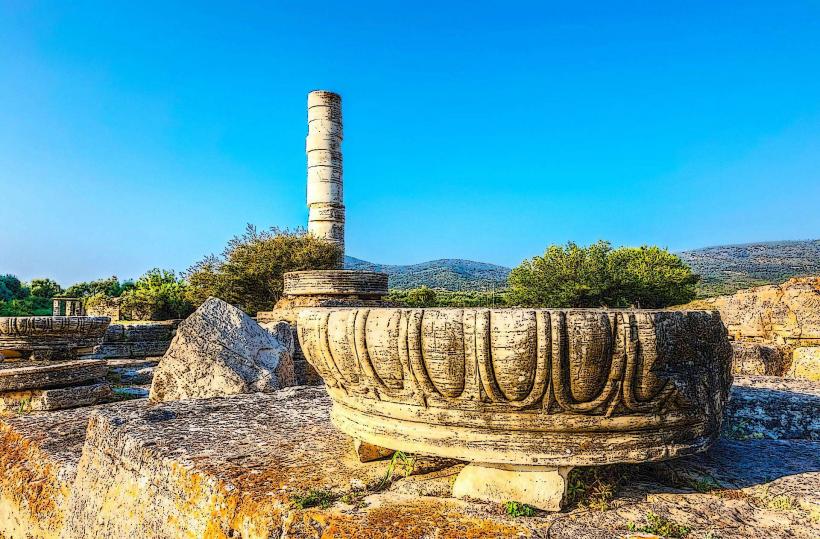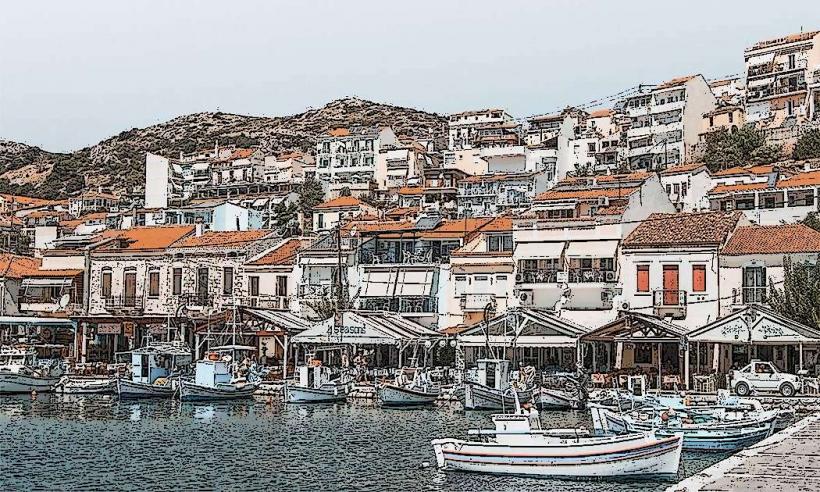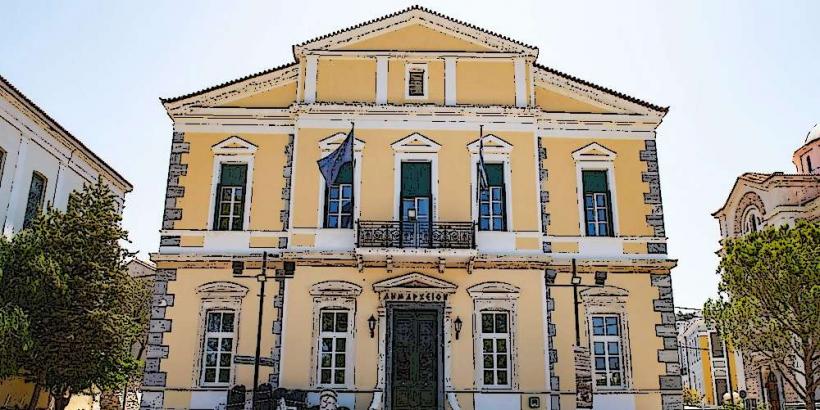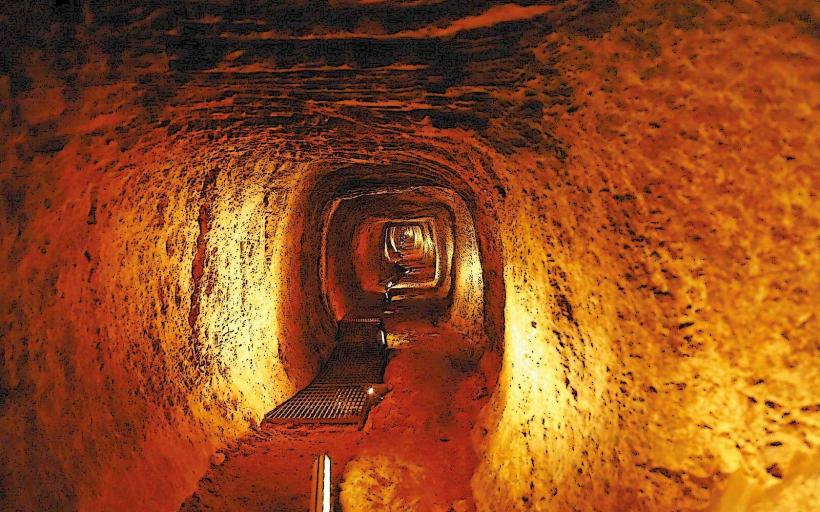Information
City: SamosCountry: Greece
Continent: Europe
Samos is a lush, historic Greek island located in the eastern Aegean Sea, close to Turkey's coast. Known for its natural beauty, including fertile valleys, rugged mountains, and stunning beaches, Samos is also steeped in history, particularly in the fields of philosophy, science, and ancient art. The island offers a diverse mix of ancient ruins, charming villages, and serene landscapes, making it an ideal destination for travelers seeking a balance of culture, nature, and relaxation.
Key Aspects of Samos
Samos Town (Vathy): The capital of the island, Vathy, is a charming harbor town surrounded by lush hills. The town is known for its traditional Greek architecture, with whitewashed buildings and narrow streets. The harbor area is lined with cafes, restaurants, and shops, offering a laid-back atmosphere. Vathy is also home to several important sites, such as the Archaeological Museum of Samos, which houses an impressive collection of artifacts from the island’s ancient past, including sculptures, pottery, and objects from the ancient city of Samos.
The Temple of Hera (Heraion): One of the most significant archaeological sites on Samos, the Temple of Hera (or Heraion) is dedicated to the ancient goddess Hera, and it was one of the largest temples in ancient Greece. The temple dates back to the 6th century BC and was an important religious center. The ruins are located near the coast, offering a tranquil setting with stunning views of the surrounding landscape. Visitors can explore the temple's remains, which include the foundations and some columns, and learn about its historical significance.
Pythagoreion: A UNESCO World Heritage site, Pythagoreion is an ancient city on the southwestern coast of Samos. It is named after the famous philosopher and mathematician Pythagoras, who was born here. The site includes several important ruins, including the Ancient Theatre, Tomb of Pythagoras, and the Eupalinos Tunnel, an ancient engineering marvel. The Eupalinos Tunnel is one of the most famous ancient aqueducts, and it was built in the 6th century BC to bring water to the city. The remains of Pythagoreion provide a fascinating glimpse into the island’s ancient civilization.
The Tunnel of Eupalinos: As mentioned above, the Tunnel of Eupalinos is one of the greatest achievements of ancient Greek engineering. It is an aqueduct tunnel that was dug through the mountain to bring water to the city of Pythagoreion. The tunnel is 1,036 meters long, and its construction was an impressive feat, especially considering the primitive tools available at the time. Visitors can enter the tunnel and walk through part of it, experiencing the ingenuity of ancient engineering firsthand.
Mount Karvounis and Hiking: Samos is home to several rugged mountains, with Mount Karvounis being the highest point on the island. The island’s diverse landscape makes it perfect for hiking and nature lovers. There are several trails that take visitors through picturesque olive groves, pine forests, and traditional villages. Hiking up Mount Karvounis offers panoramic views of the island, the surrounding Aegean Sea, and nearby islands. The island’s rich flora and fauna make it a haven for nature enthusiasts.
Samos’ Beaches: The island offers a variety of beaches, ranging from pebbly shores to sandy stretches. Some of the most popular beaches include:
- Kokkari: A charming seaside village with a small but beautiful beach. Kokkari is well-known for its crystal-clear waters and is ideal for windsurfing, due to the area’s favorable wind conditions.
- Posidonio Beach: A popular beach near the village of Posidonio, featuring clear waters and a lively atmosphere. It’s a great spot for swimming and relaxing in the sun.
- Votsalakia Beach: Located on the southern coast of the island, Votsalakia offers a long sandy beach with clear waters and is lined with restaurants and tavernas.
- Tsamadou Beach: Known for its beauty, Tsamadou is a quieter, more secluded beach surrounded by lush greenery. It’s perfect for those seeking a peaceful day by the sea.
- Megalo Seitani: A more remote and secluded beach, Megalo Seitani is accessible by boat or a hike, making it ideal for those seeking a more private and untouched spot.
The Monastery of Panagia Spiliani: Situated on a hill near Pythagoreion, the Monastery of Panagia Spiliani offers stunning views of the Aegean Sea and the surrounding landscape. The monastery, dedicated to the Virgin Mary, is built into a cave and is one of the most important religious sites on the island. Visitors can explore the monastery, its beautiful courtyard, and the surrounding peaceful grounds.
Vineyards and Wine Tasting: Samos is known for its vineyards and wine production, particularly the production of Muscat wine. The island’s wine is highly regarded, and there are several wineries where visitors can sample local wines and learn about the island’s winemaking traditions. Many wineries offer tours, where guests can walk through the vineyards, visit the wine cellars, and taste a variety of local wines.
Traditional Villages: Charmed by its natural beauty and traditional architecture, Samos has several quaint villages scattered across its landscape. Some notable villages to visit include:
- Kallithea: A traditional village with narrow streets, stone houses, and an authentic Greek atmosphere. It’s located on the slopes of Mount Karvounis and offers stunning views.
- Manolates: A picturesque mountain village with stone houses, cobbled streets, and lovely views of the island. The village is known for its local handicrafts, particularly embroidery and woven goods.
- Karlovassi: A larger town on the northern coast of Samos, Karlovassi is known for its neoclassical architecture, beautiful beaches, and traditional Greek charm.
Samos’ Culinary Delights: Samos is known for its fresh, local produce, and its cuisine features a variety of traditional Greek dishes. Some specialties include:
- Samos Wine: As mentioned, Samos is famous for its Muscat wine, a sweet and aromatic white wine that is often served as an aperitif or dessert wine.
- Samos Sweets: Local sweets made with nuts, honey, and fruits are popular on the island, including samos pastry, a honey-soaked dessert.
- Kavourmas: A traditional meat dish made from pork, often served with olive oil and spices.
- Fresh Seafood: The island’s proximity to the sea means fresh seafood is abundant, with tavernas offering everything from grilled fish to octopus.
The Archaeological Museum of Samos: Located in Samos Town, the Archaeological Museum of Samos showcases the island’s rich history through a collection of sculptures, pottery, and artifacts from ancient times. Of particular interest are the exhibits related to the ancient city of Samos, the Temple of Hera, and the famous ancient Greek sculptor Polyclitus, who was born on the island.
Why Visit Samos?
Samos is a fantastic destination for those looking to explore a blend of history, culture, and natural beauty. The island offers a variety of experiences, from ancient archaeological sites and stunning beaches to charming villages and hiking trails. With its rich history, beautiful landscapes, and warm Mediterranean climate, Samos is a hidden gem that attracts those who want to experience the authentic spirit of Greece away from the more touristy islands. Whether you're interested in ancient ruins, Greek mythology, or simply relaxing by the sea, Samos has something for everyone.





